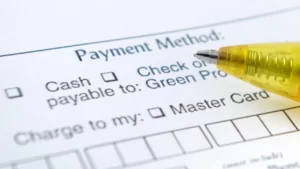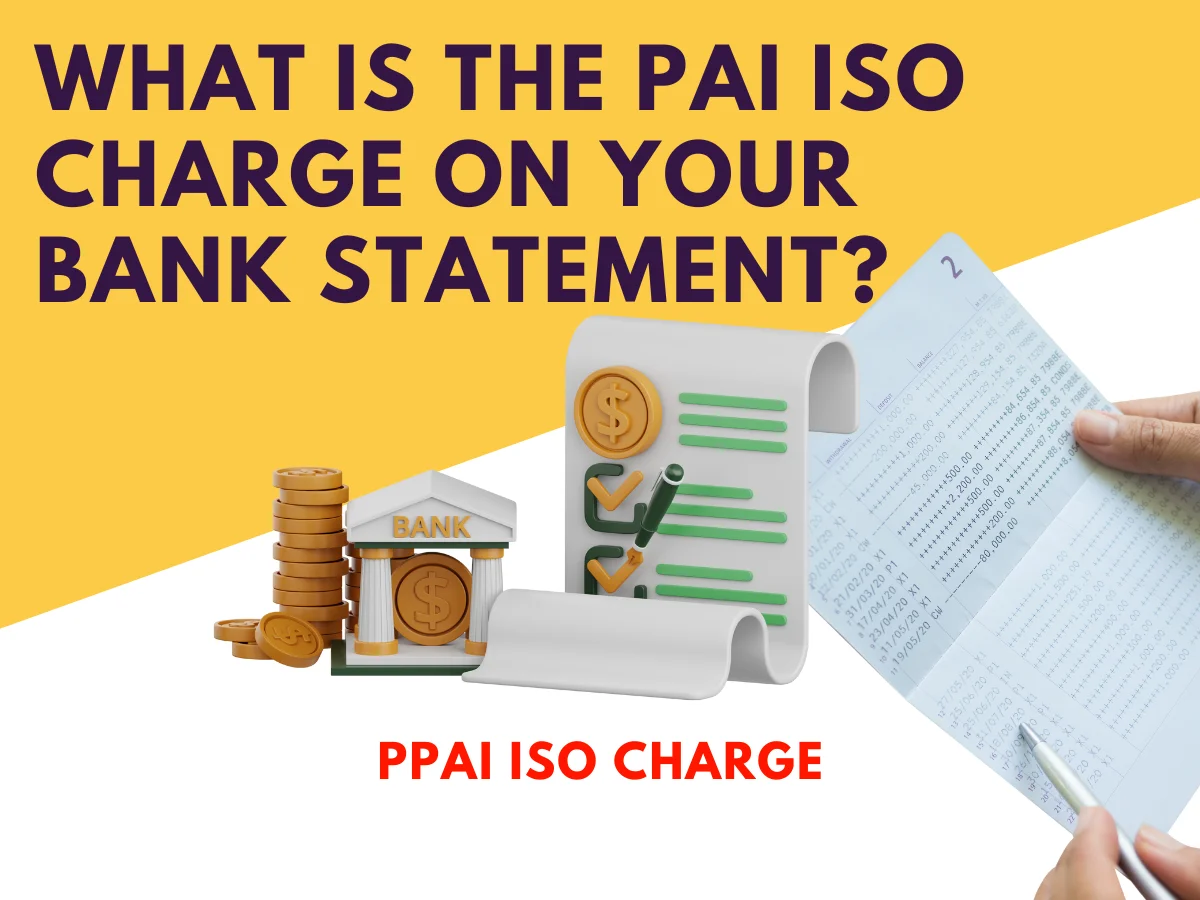In the hustle and bustle of managing our finances, it’s not uncommon to come across mysterious charges on our bank statements. One such enigma is the “PAI ISO” charge. If you’ve ever raised an eyebrow at this entry in your statement, rest assured, you’re not alone.
In this article, we’ll delve into the intricacies of the PAI ISO charge, exploring what it is, why it appears on your bank statement, and how to manage it effectively.
What Is the PAI ISO Bank Charge?
PAI ISO on bank statement stands for “Payment Alliance International Interchange Service Organization.” Simply put, it’s a fee levied by banks for processing transactions made through debit and ATM cards. This charge, often a small percentage of the total transaction amount, is designed to cover the costs associated with electronic payment processing.
What Is Payment Alliance International?
To understand the PAI ISO charge on bank statement, it’s essential to know the key player behind Payment Alliance International (PAI). Established in 2005 and headquartered in Louisville, Kentucky, PAI has grown to become a leading provider of ATM and electronic payment processing services. Boasting one of the largest ATM networks in the United States, with over 75,000 ATMs nationwide, PAI extends its services to both merchants and financial institutions.
PAI offers a suite of payment processing solutions, including credit and debit card processing, mobile payments, and point-of-sale solutions. Committed to providing innovative and reliable payment processing, PAI has earned a stellar reputation in the payments industry.
How Does the PAI ISO Charge Appear on a Statement?
When you use your debit or ATM card for a transaction, the merchant incurs a fee charged by the payment processor – PAI, in this case. This fee is then passed on to your bank as the PAI ISO charge. On your bank statement, the PAI ISO charge will be listed as a separate line item, accompanied by various descriptions like “PAI ISO,” “ISPA/PIMDS Withdrawal PAI ISO,” or simply “Payment Alliance International.”

It’s important to note that the amount of the PAI ISO charge varies, contingent on the bank and the nature of the transaction. While the fee may seem inconspicuous for individual transactions, it can accumulate over time, especially for those who frequently use their debit or ATM cards.
PAI ISO Charges | Unraveling the Variability
The variability in PAI ISO charges is influenced by several factors:
1. Bank Policies:
Different banks adopt distinct policies and fee structures for PAI ISO charges. Some charge a flat fee, while others opt for a percentage of the transaction amount. The fee may also differ based on the type of account held with the bank.
2. Type of Transaction:
The nature of the transaction, be it a withdrawal, purchase, or fund transfer, can impact the PAI ISO charge. For instance, ATM withdrawals might incur a higher fee compared to point-of-sale transactions.
3. Merchant Policies:
Merchants may either absorb the PAI ISO fee or pass it on to customers. The approach varies, with some including it as a separate charge and others incorporating it into the total transaction amount.
4. Location-Based Variability:
The state or city where the transaction occurs can affect the PAI ISO charge. Certain states have regulations limiting the charge amount, while others do not.
5. Volume of Transactions:
Some banks offer discounted rates on PAI ISO charges for those with a high volume of transactions, often as part of a broader banking package.
6. Currency and International Transactions:
Foreign currency transactions or those in different countries may attract additional fees on top of the standard PAI ISO charge.
Alternative Payment Methods to Sidestep PAI ISO Charges
For those seeking to evade or minimize PAI ISO charges, various alternative payment methods prove effective:

1. Cash Payments:
Using cash eliminates electronic payment processing, sidestepping PAI ISO charges. However, it’s crucial to consider the security and convenience of carrying cash.
2. Credit Cards:
Credit card transactions are processed differently, sometimes avoiding PAI ISO charges. Be mindful of potential fees or interest rates associated with credit card transactions.
3. Digital Wallets:
Services like Apple Pay, Google Pay, and Samsung Pay offer alternative electronic payment methods that may or may not include PAI ISO-like charges.
4. Online Payment Platforms:
Platforms like PayPal, Venmo, and Zelle allow electronic payments without incurring PAI ISO charges.
5. Bank Transfers:
Some banks offer low-cost or free bank-to-bank transfers as an alternative to PAI ISO charges.
6. Cryptocurrency:
Though not universally accepted, cryptocurrencies like Bitcoin provide an alternative free from traditional banking fees.
7. Gift Cards and Prepaid Cards:
Using these cards can help avoid PAI ISO charges as transactions are not subject to the same fees as standard debit or ATM cards.
How to Manage an Unknown PAI ISO Bank Charge?
Encountering an unfamiliar PAI ISO charge on your bank statement can be unsettling, but there are steps to manage the situation effectively:
1. Contact Your Bank or Financial Institution:
Initiate contact with your bank to inquire about the charge. Obtain details about the transaction and how the charge was applied.
2. Verify the Charge:
Check your records to confirm the legitimacy of the charge. If fraud is suspected, report it to your bank promptly.
3. Dispute the Charge:
If the charge seems incorrect or fraudulent, dispute it with your bank. They will investigate and determine whether the charge should be reversed.
4. Take Preventative Measures:
To prevent future unknown charges, monitor your account regularly, safeguard your cards, and consider alternative payment methods.
5. Seek Professional Assistance:
If resolution proves elusive, consumer protection agencies or financial advisors can offer guidance and assistance.

PAI ISO Charges and Business Owners
For business owners, understanding PAI ISO charges is paramount, as these fees can impact profitability. Here’s how:
1. Impact on Profitability:
Accumulating quickly, PAI ISO charges can eat into profit margins, especially for businesses with a high volume of electronic transactions.
2. Cost of Doing Business:
Considered a cost of doing business, these charges may become a concern if they account for a substantial portion of operational expenses.
3. Negotiation Opportunities:
Businesses processing a high number of transactions may have room to negotiate fees with their payment processor or explore alternatives.
4. Transparency with Customers:
If passing on charges to customers, transparency is essential to maintain trust.
5. Tax Implications:
Accurate record-keeping of PAI ISO charges allows businesses to potentially write them off as a business expense during tax season.
6. Strategic Planning:
Understanding PAI ISO charges aids in strategic planning, allowing adjustments based on seasonal or transaction-specific fluctuations.
Conclusion
In conclusion, comprehending the PAI ISO charge is essential for effective financial management. In essence, grasping the intricacies of the PAI ISO charge empowers individuals and businesses alike to navigate their financial landscape more effectively.
By understanding its origins, variability, and available alternatives, one can make informed decisions to mitigate its impact. Whether seeking transparency in personal finances or strategizing for business success, managing the PAI ISO charge is a step toward financial empowerment and control.
Check out What Is the PNP BILL PAYMENT Charge on Your Bank Statement?

Your point of view caught my eye and was very interesting. Thanks. I have a question for you.